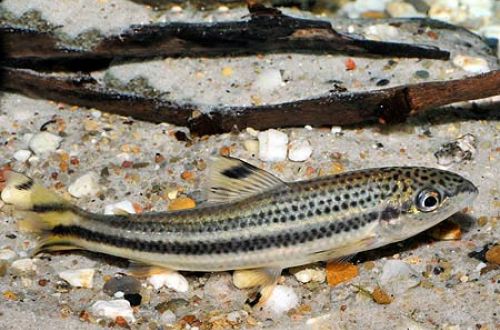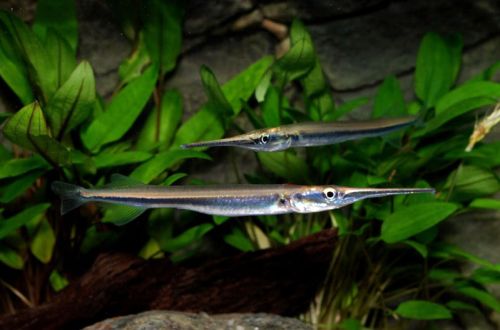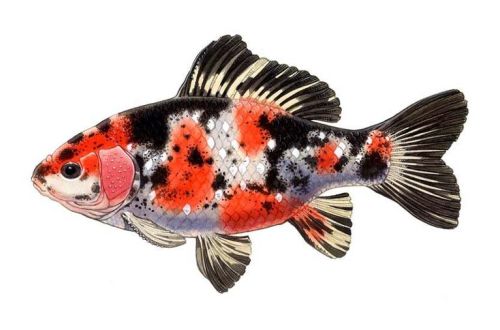
Leporina vittatis
Leporine vittatis, scientific name Leporellus vittatus, belongs to the Anostomidae family. A large fish with a difficult disposition and modest coloration, in need of a spacious aquarium. All this has led to its weak popularity in amateur aquariums, so it is not often presented for sale.

Contents
Habitat
Comes from South America. The natural habitat covers vast expanses of the Amazon basin in Brazil and Peru. It occurs everywhere, inhabiting both the main riverbeds and numerous tributaries. During the rainy season, it swims to flooded areas of the rainforest.
Brief information:
- The volume of the aquarium – from 700 liters.
- Temperature – 18-26°C
- Value pH — 5.5–7.5
- Water hardness – 1–12 dGH
- Substrate type – any
- Lighting – moderate or subdued
- Brackish water – no
- Water movement – light or moderate
- The size of the fish is 25–30 cm.
- Nutrition – any feed with plant components
- Temperament – conditionally peaceful
- Keeping in a group of 3-4 individuals
Description
Adult individuals reach a length of 25–30 cm. Sexual dimorphism is weakly expressed, males and females are practically indistinguishable outwardly. The coloration of the fish combines a pattern of dark speckles and dark stripes on a yellowish background, stretching from the head and continuing on the tail. Juveniles appear noticeably lighter.
Food
In nature, they feed mainly on algae and various plant remains in the bottom layer. In the home aquarium, most popular dry and freeze-dried foods (flakes, granules, etc.) will be accepted, provided that they contain a large amount of plant components.
Maintenance and care, arrangement of the aquarium
The optimal size of the aquarium for a group of 5-6 fish starts from 700 liters. They look most harmoniously among the design, reminiscent of the bottom of the river with a substrate of stones of the size, sand, fine gravel and large boulders. An additional decor will be snags in the form of roots and branches of trees. The choice of live plants should be approached with caution, given the diet of these fish. It is permissible to use unpretentious species from among Anubias, water mosses and ferns.
Like many other fish that come from flowing waters, when keeping Leporins wittatis, it is important to ensure high water quality in suitable hydrochemical parameters for them, and also to avoid the accumulation of organic waste. In addition, the necessary conditions include the movement of water and a significant content of dissolved oxygen.
Maintaining ecological balance on such a large scale will require the placement of efficient filtration systems and water quality monitoring, and other necessary equipment.
Behavior and Compatibility
Intraspecific relationships are built on a hierarchy, at the head of which is the strongest individual, therefore it is recommended to maintain a group of 6 or more individuals. One by one they become aggressive. Compatible with other large South American cichlids, catfish.
Fish diseases
A hardy, unpretentious fish, provided that it is kept in a suitable environment. The deterioration of water quality (high levels of pollution) inevitably leads to immune suppression, which in turn makes Leporina vittatis susceptible to various infections. As a rule, placing the fish in an optimal environment leads to the disappearance of the symptoms of the disease. However, if they persist, medical treatment will be required. Read more about the causes, symptoms and methods of treating diseases in the section “Diseases of aquarium fish”.





